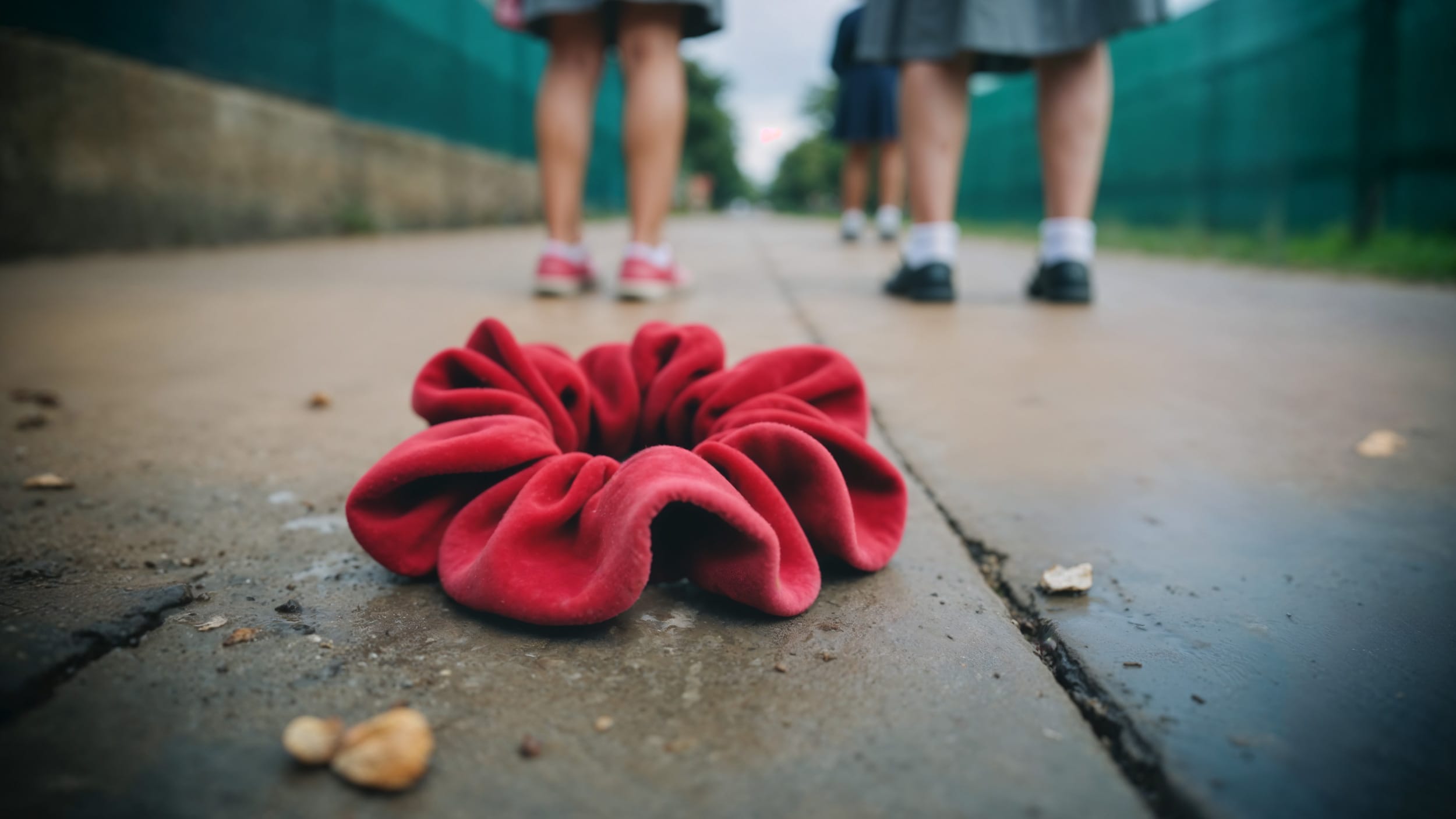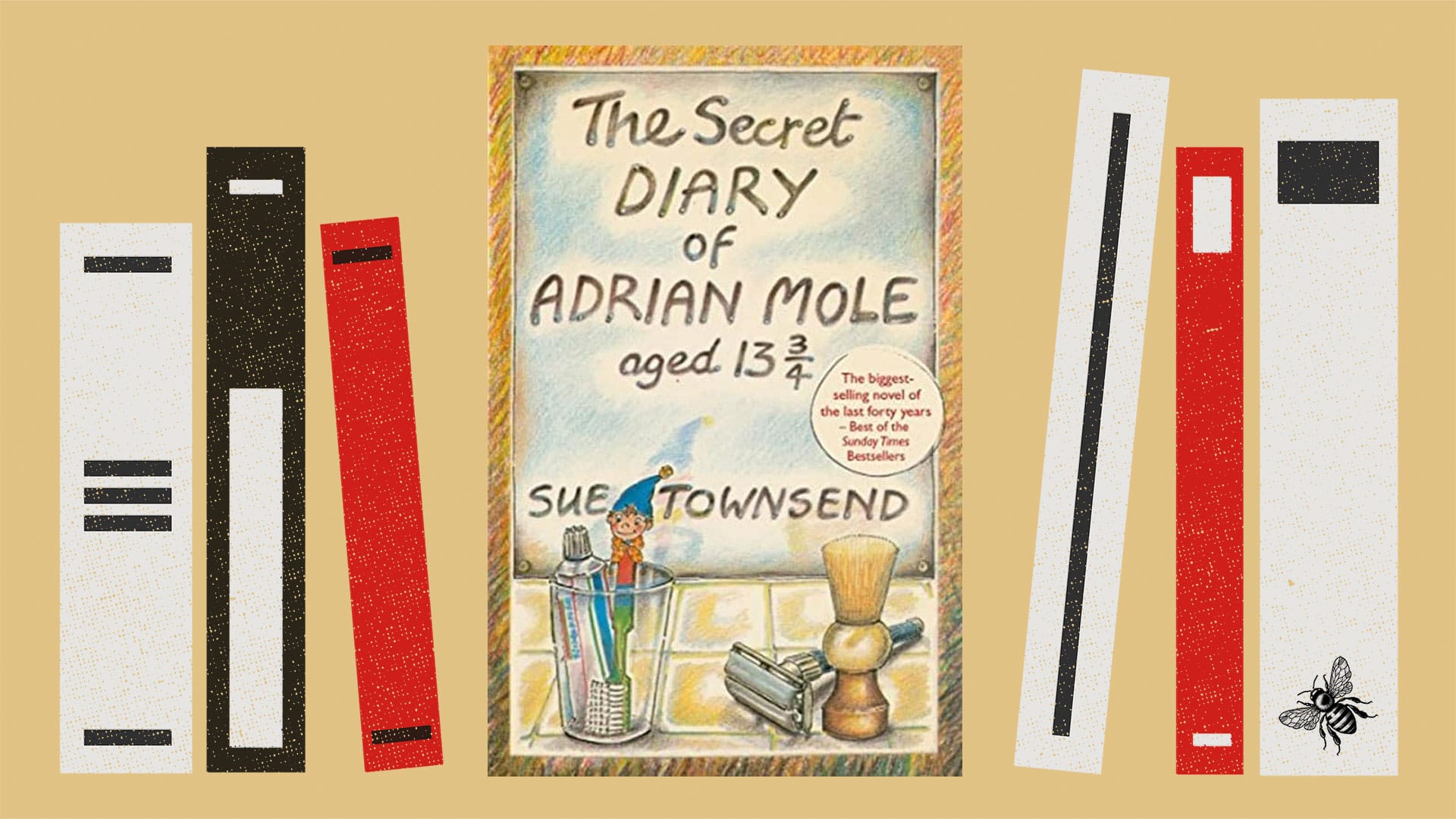Scrunchies would go flying when the girls were fighting. Faux velvet, leopard print, denim and gingham. There were often two scrunchies per high ponytail in early noughties Scarborough, and hair was always harnessed for a girl fight. The reason for the fight didn’t have to be more than a wrong look, and often wasn’t. Some of the lasses were like cans of Lynx in a bonfire. It wasn’t a question of if they would blow but when, and who would get taken out by the explosion.
News of impending violence was the sheepdog to the flock, and all would race to the yard and make a circle around whoever was fighting. You expected to see some girls, like Shelly B who lived on our street, but others were unwillingly dragged in. Whip-crack slaps to faces and upper arms would precede the clawing of cheeks with chipped-glitter nails. When the lasses were finally dragged apart, hair sculpted that morning with samurai-precision would be a mousse-stiffened cloud, like feral candyfloss.
The smell of girl fights was post-PE sweat and Impulse body spray (02 or Vanilla Kisses), and their colour was often green. One of the popular lads might have dumped this lass for the other, or this lass might be known to fancy the other’s lad. Maybe the lad had given the lass a grot at a party, fuelled by Hooch or kiwi MD2020, and there was no foundation makeup thick enough to hide it.
It wasn’t just the girls who fought. Sometimes the mums did, too: Mrs Romano and Mrs East, for example, going at each other outside the primary school gates. Over an affair, my mum later explained, and (not to worry) the tangled mass on the tarmac afterwards was just hair extensions.
A girl fight could be worse than any fight between the lads when someone like Shelly B was involved. Blood on the rim of the sink in the girls’ bathroom was the aftermath of a smashed-in head. The police came for Shelly that time, but she was back at school soon enough, ponytail three scrunchies high and magnificent as a Harbour Bar ice-cream. A lot of us wore our white slouch socks two pairs deep for volume, but Shelly’s were always the biggest, pushed down to reveal legs that looked to have built-in shin pads, and knees made for winter hockey. If it was possible for a school tie to look intimidating then hers did, worn as stout and wide as possible.
At the time, she seemed to be made of something completely different to me, like a firework compared to a soft-boiled egg, even though we had grown up on the same street. Shelly lived three doors down from us, with her mum and a cat called Shammy Leather. When we were small, she had fed a cake made of mud and PVA glue to my little brother. At the park she liked to melt things with a cigarette lighter: black plastic swing seats and seesaw handles. “Your mum’s a fucking lezzer!” she’d announce to me in front of the Rawton boys. She never brayed me, but that regular taunt stuck like Hubba Bubba on tarmac.
Braying was different to fighting, because it was about one lass giving another a bad kick-in. The hardest girls weren’t the prettiest, so just being fit, even if you didn’t mean to be, could make you a target. So could being a swot, or being bad at sports. And if you were all three, God help you! I swiftly learned to keep academic enthusiasm to a minimum when, on my first day at secondary school, an eager response to a teacher’s question about the features of a motte-and-bailey castle earned me a dead arm. Hand raising was strictly rationed after that. Luckily, although Scott Newbold once told me I was pretty at a party before throwing up all over my trouser skirt, none of the popular lads fancied me, and my willingness to get knocked out on the netball court as a decent Goal Defence earned me another level of immunity.
The PE changing rooms were one of the hotspots for getting brayed. One excuse for it might just be that you had the wrong kit. When it came to trainers, Adidas Galaxies and Reebok Classics were best, but anything Hi-Tec could get you a kick-in. Kickers were the only acceptable shoe, and you wanted the tags to be showing. Jackets and bags needed to be brands; a Kappa jacket was a prize possession. The vicar’s daughter had a pretty face and she had a camel coat from Marks and Spencer, facts that inevitably led to her being shoved, coat and all, into a freezing shower.
“I’ll do something good one day, and you’ll be in the gutter!” I remember her saying to the jeering lasses as she stood there dripping, and I thought, ‘Wow, believing in God must give you balls!
The threat of violence was something I never questioned at school. You just carried it around with you, as surely as the pair of compasses in your pencil tin. Even now, when I spot lasses in the street or on the bus I can sometimes feel the sense of built-up pressure. And I keep a wide berth, if I can. It’s funny, though: I don’t really think about Shelly much, or the other hardest girls from school. They’ll just be mums with their own kids now, dealing with bills and illnesses and divorces; all the things our mums were dealing with then. Maybe the rage can be accounted for if you look hard enough at circumstances, but in a way it’s bigger than that, just part of the fabric of the town, like the amusements, and the fish and chip shops. I reckon there’ll always be lasses getting brayed in Scarborough, and other lasses watching, and one day telling stories about it.
All donations go towards supporting the Bee’s mission to nurture, publish promote and pay for the best new working-class writing.









Comments